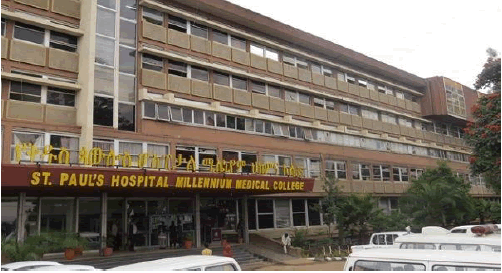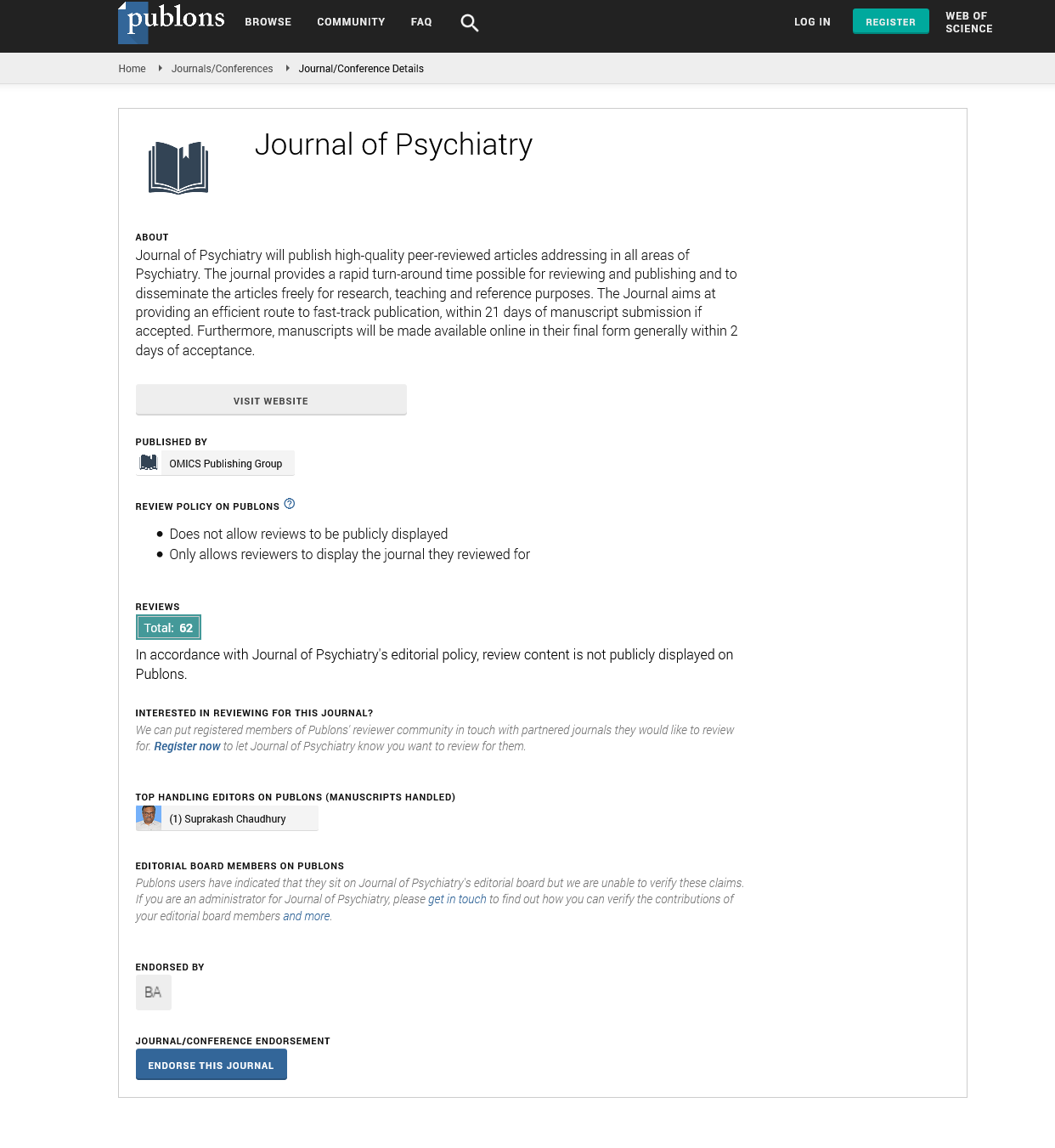Indexed In
- RefSeek
- Hamdard University
- EBSCO A-Z
- OCLC- WorldCat
- SWB online catalog
- Publons
- International committee of medical journals editors (ICMJE)
- Geneva Foundation for Medical Education and Research
Useful Links
Share This Page
Open Access Journals
- Agri and Aquaculture
- Biochemistry
- Bioinformatics & Systems Biology
- Business & Management
- Chemistry
- Clinical Sciences
- Engineering
- Food & Nutrition
- General Science
- Genetics & Molecular Biology
- Immunology & Microbiology
- Medical Sciences
- Neuroscience & Psychology
- Nursing & Health Care
- Pharmaceutical Sciences
Value Added Abstract - (2020) Volume 0, Issue 0
Neuromyelitis Optica (NMO, NMOSD)
Rodas Asrat*, Sisay G, Amir Sultan, Ayub K, Semere N, Fethanegist T and DR AduyaPublished: 16-Sep-2020
Abstract
Introduction: Neuromyelitis optica (NMO; Devic’s disease) is an aggressive inflam¬matory disorder characterized by recurrent attacks of ON and myelitis; the more inclusive term NMO Spectrum Disorder (NMOSD) has been proposed to incorporate individuals with partial forms, and also those with involvement of additional structures in the central nervous system. This was a rare case which was diagnosed after 7 years while the patient has follow up at different health facility and different investigation in different times. She was treated initially as a case of Transverse myelitis and other diagnosis previously until its diagnosis.
Case report: Decrease vision of left eye. For this she was seen at ophthalmologic clinic and was given prednisolone. She claims she regained her left eye vision.. Currently she presented with 4 days history of bilateral lower extremity weakness. Initially had paresthesia of lower extremities later lost sensation below her nipple line. Inability of urinating and passing stool of the same duration. She developed cough, SOB and HGIF in our hospital. She is a known HTN for the past 18 years on medication.
Physical Examination: G/A: conscious, alert and well communicative V/S: with in normal range. LGS: no LAP INT/MSS: No rash PR: lax anal tone CNS: conscious, oriented to time place and person. GCS: 15/15 both short and long memory intact. Symmetrical muscle bulk, no fasciculation. Power =0/5 on bilateral lower extremity and 5/5 on both upper extremity. Tone is hypotonic on both lower extremities and norm tonic on both upper extremity. Reflex is ¼ in both ankle and knee bilaterally. Sensory level is T4.Finger to nose test- normal .Rapid alternating movement – intact Investigation-CSF Analysis-No cell, Glucose=82.4, Protein=24.8, Gram stain= negative. BRAIN MRI (Taken 7 YEARS BACK)= normal. Brain MRI (taken 4 months back)= Few punctate T2/FLAIR hyper intense lesion with in deep white matter of frontal and parietal lobe left paretotemporal volume loss 2 to ??.Recent spinal MRI: Expansible long segment T1hypointense, T2 and STIR heterogeneously hyper intense lesion extending from C3 to lower thoracic vertebra. No contrast enhancement Electromyography-Pattern reversal visual evoked potential (PRVEP) was done. The P100 latency was well formed bilaterally. The P100 latency is prolonged (>100ms), more on the right side. Bilateral (severe on Rt) anterior visual pathway dysfunction (demyelinating pathophysiology).Otherwise No vomiting, no episodes of Hiccups. No Hx of nasal congestion, runny nose, diarrhea or vaccination preceding presentation. No Hx of easy fatigability. No change in mentation and no ABM.
Discussion: Because of this case we try to see and explain some of the uncommon differentials which have similar manifestations like NMOSD. Example Multiple sclerosis (MS), Acute disseminated encephalomalitis (ADEM), Subacute combined neuro degeneration, Neurosarcoidosis. We try to see some of the literature reviews and the diagnosis of this patient was very difficult since there are no antibody detections here, late presentations, bilateral optic neuropathy and it is relapsing type on her history. Even its extensive longitudinal involvement of the spinal cord, her age and normal CSF was really controversial. What I understand from this case is multidisciplinary team involvement and presence of adequate investigation modalities is really important. Besides that its presentation involves both usual and unusual features.

Biography:
Rodas Asrat is currently working in the St. Paul’s Hospital Millennium Medical College, Ethiopia.

Speaker Publications:
1. Wingerchuk DM, Hogancamp WF, O‘Brien PC, Weinshenker BG: “The clinical course of neuromyelitis optica (Devic’s syndrome)’’. Neurology 1999, 53:1107-1114.
2. Kitley J, Leite MI, Nakashima I, Waters P, McNeillis B, Brown R, Takai Y, Takahashi T, Misu T, Elsone L, Woodhall M, George J, Boggild M, Vincent A, Jacob A, Fujihara K, Palace J: ‘’Prognostic factors and disease course in aquaporin-4 antibody-positive patients with neuromyelitis optica spectrum disorder from the United Kingdom and Japan”. Brain 2012, 135:1834-1849.
3. Lennon VA, Kryzer TJ, Pittock SJ, Verkman AS, Hinson SR: “IgG marker of optic-spinal multiple sclerosis binds to the aquaporin-4 water channel”. J Exp Med2005, 202:473-477.
4. Lennon VA, Wingerchuk DM, Kryzer TJ, Pittock SJ, Lucchinetti CF, Fujihara K, Nakashima I, Weinshenker BG: “A serum autoantibody marker of neuromyelitis optica: distinction from multiple sclerosis”. Lancet 2004, 364:2106–2112.
5. Wingerchuk DM, Banwell B, Bennett JL, Cabre P, Carroll W, Chitnis T, et al. “International consensus diagnostic criteria for neuromyelitis optica spectrum disorders”. Neurology. 2015; 85:177-89.
34th European Neurology Congress; Webinar-June 24-25, 2020.
Abstract Citation:
Rodas Asrat, Neuromyelitis optica (NMO, NMOSD), Neurology Congress 2020, 34th European Neurology Congress Webinar- June 24-25, 2020.
(https://neurologyconference.com/europe/abstract/2020/neuromyelitis-optica-nmo-nmosd)

